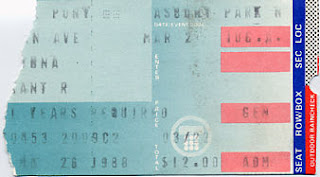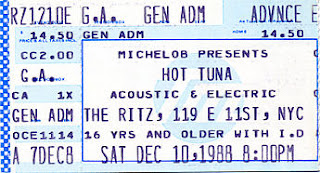This is a warm up exercise for an updating of my somewhat out-of-date "top five books" list. These are my top five favorite essays about software design. Well, OK, to be accurate there are three essays and two interviews. The good news is that the three pieces from Winograd's Bringing Design to Software can all be read on the hci.stanford.edu Web site (sans figures though). For the others, you'll have to buy the books. Heck you ought to buy Bringing Design to Software anyway.
Here we go. Five essays for interaction designers...to inform, to inspire.
"A Software Design Manifesto", Mitch Kapor. In Bringing Design to Software (Winograd, 1996). This essay was first given as a talk at Esther Dyson's PC Forum in 1990, and it first appeared in print in Dr. Dobbs Journal in 1991. Kapor's essay represents a call to arms for a software design profession, and draws a strong parallel between software design and architecture.
"The Right Way to Think About Software Design", Theodor Holm Nelson. In The Art of Human-Computer Interface Design (Laurel, 1990). Ted Nelson is an early pioneer in Computer Supported Cooperative Work (CSCW) and information technology. He is credited with coining the terms "hypertext" and "hypermedia" in the 1960s, and along with Andries "Andy" van Dam he created the first hypertext system at Brown in the late 60s. Nelson's essay draws an analogy between software design and movie-making; interactivity is a key concept in both.
"The Designer's Stance", an interview with David Kelley by Bradley Hartfield. In Bringing Design to Software (Winograd, 1996). David Kelley is the founder of IDEO, which is arguably the world's premier design firm. This interview is a nice short introduction to Kelley's ideas, and should whet any designer's appetite for reading The Art of Innovation, written by David's brother Tom Kelley (IDEO's general manager).
"Cultures of Prototyping", Michael Schrage. In Bringing Design to Software (Winograd, 1996). Schrage is a well known consultant, writer, and researcher at the MIT Media Lab. This essay discusses the importance of prototyping to creativity and innovation, and draws on examples from the automotive and consumer electronics industries. This essay plays well with my opinion that software design needs to be much more like industrial design, and that we place far too much emphasis on "specs" as the primary deliverable of product designers, rather than multiple methods of articulating design and vision.
"Designing the PalmPilot: A Conversation with Rob Haitani", an interview with Rob Haitani by Eric Bergman. In Information Appliances and Beyond (Bergman, 2000). Rob Haitani was the Product Manager for the original PalmPilot, and is widely credited with being in charge of the design of the PalmOS user interface. As a Palm user from the very first PalmPilot, I'm an unabashed PalmOS fan. This interview, the longest reading so far at 20 pages, is a fascinating look at the design process and design for the small screen.
















